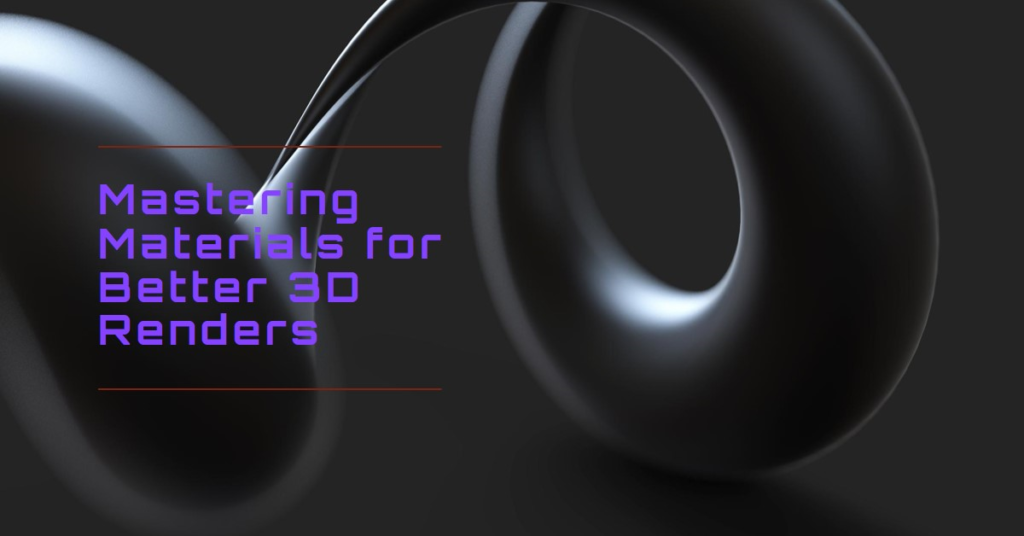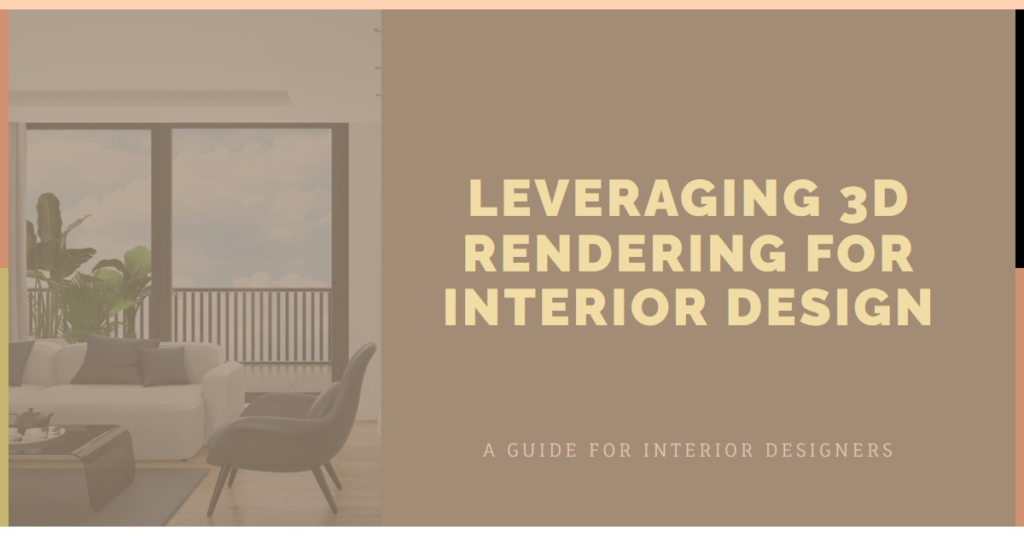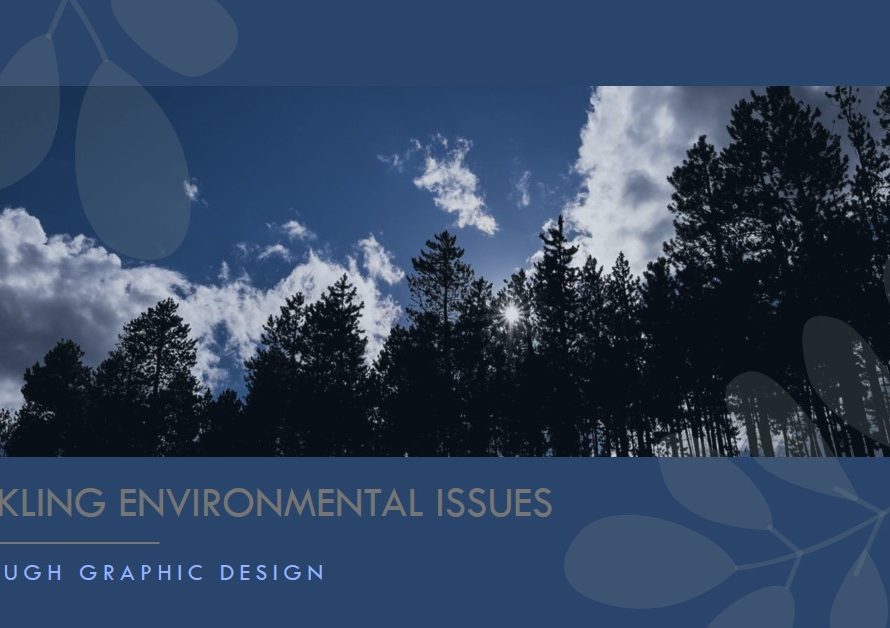
Table of Contents
In the realm of 3D rendering, understanding the properties, characteristics, and behaviors of materials plays a pivotal role in creating realistic, compelling visualizations that captivate audiences and convey design intent effectively. In this in-depth exploration, we delve into the ways in which knowledge of materials enhances 3D renders, elevating the quality, accuracy, and visual impact of rendered images and animations in various design contexts.
1. Understanding Material Properties and Textures
The foundation of material knowledge lies in understanding the inherent properties and textures of different materials used in architectural and design contexts. From wood and metal to fabric and glass, each material possesses unique attributes such as reflectivity, transparency, roughness, color variations, and tactile qualities that influence how they interact with light and environment in 3D renders. Designers who comprehend these material properties can accurately replicate surface textures, finishes, and visual effects in renderings, creating lifelike representations that resonate with viewers and clients.
2. Achieving Realistic Lighting and Reflections
One of the key aspects influenced by material knowledge in 3D rendering is the realistic portrayal of lighting and reflections across various surfaces and materials within a scene. Different materials exhibit distinct reflective properties, gloss levels, and light absorption behaviors that impact how they respond to artificial or natural lighting sources in virtual environments. By accurately defining material properties such as specular highlights, diffuse reflections, and refractive indices, designers can achieve convincing lighting effects, accurate shadow play, and realistic reflections that enhance visual realism and depth in 3D renders.
3. Balancing Color Accuracy and Consistency
Material knowledge plays a crucial role in maintaining color accuracy, consistency, and fidelity in 3D renders, ensuring that colors of materials match real-world counterparts under different lighting conditions and viewing angles. Understanding color theory, material pigments, and surface finishes allows designers to calibrate material shaders, textures, and color maps effectively within rendering software, preventing color distortions, mismatches, or inconsistencies in final render outputs. Consistent color representation across materials enhances design coherence, brand identity adherence, and client satisfaction with rendered visualizations.
4. Simulating Texture Details and Surface Imperfections
Texture details and surface imperfections contribute significantly to the authenticity and tactile quality of materials in 3D renders, requiring designers to have a nuanced understanding of material textures, patterns, and imperfections. From grain patterns in wood to scratches on metal surfaces, accurately replicating texture details adds depth, character, and visual interest to rendered images, making them more believable and engaging for viewers. By incorporating procedural textures, bump maps, displacement maps, and texture mapping techniques, designers can simulate intricate surface details and imperfections that enhance realism and storytelling in rendered scenes.
5. Integrating Material Behavior in Animation and Dynamics
Beyond static renders, knowledge of materials influences how they behave dynamically in animated sequences, simulations, and interactive environments within 3D rendering workflows. Materials such as fabrics, fluids, and deformable surfaces exhibit specific behaviors such as elasticity, viscosity, and flow dynamics that must be accurately simulated and rendered in motion graphics, simulations, or virtual reality experiences. Designers versed in material physics, simulation engines, and particle systems can create compelling visual narratives, fluid simulations, and dynamic interactions that bring designs to life in captivating and immersive ways.
6. Enhancing Environmental and Contextual Realism
Material knowledge extends to understanding how materials interact with environmental factors such as weather conditions, time of day, geographic locations, and architectural contexts in 3D renders. Designers proficient in material properties and environmental modeling can simulate effects like weathering, aging, UV degradation, and contextual lighting conditions that add layers of realism, storytelling, and authenticity to rendered scenes. Whether showcasing exterior landscapes, interior spaces, or product designs, integrating material-context interactions enhances visual narratives and strengthens emotional connections with audiences.
7. Optimizing Rendering Workflows and Efficiency
Proficiency in material knowledge not only improves visual quality but also optimizes rendering workflows, efficiency, and resource utilization in 3D rendering projects. Designers well-versed in material shaders, procedural textures, and optimization techniques can create lightweight, optimized material libraries, and render settings that reduce render times, memory usage, and computational resources without compromising visual fidelity or quality. Streamlining rendering workflows enhances productivity, iteration speed, and project scalability, allowing designers to focus more on creative aspects and design refinements.
8. Customizing Material Effects and Special Effects
Advanced material knowledge empowers designers to customize material effects, special effects, and visual enhancements that go beyond standard material properties in 3D renders. By leveraging shader nodes, scripting languages, and rendering plugins, designers can create complex material effects such as subsurface scattering, iridescence, translucency, and volumetric effects that add richness, depth, and artistic flair to rendered visuals. Custom material effects enable designers to push creative boundaries, emulate natural phenomena, and achieve stylized looks that align with project aesthetics and design visions.
9. Collaborating Effectively with Cross-disciplinary Teams
In multidisciplinary design projects involving architects, interior designers, engineers, and visualization specialists, material knowledge serves as a common language that facilitates effective collaboration, communication, and design coordination across teams. Designers equipped with material expertise can collaborate seamlessly with colleagues from different disciplines, aligning design intent, material specifications, and visual expectations to deliver cohesive and integrated design solutions. Clear communication of material properties, requirements, and design goals fosters synergy, innovation, and successful project outcomes in collaborative design environments.
10. Continuing Education and Exploration of New Material Trends


The field of materials science and technology is continually evolving, introducing new materials, finishes, and fabrication techniques that impact 3D rendering practices and design aesthetics. Designers committed to lifelong learning, exploration of material trends, and experimentation with new materials in virtual environments stay ahead of industry developments, enrich their design palettes, and offer innovative solutions to clients. Engage in material workshops, material supplier collaborations, and material trend research to expand material knowledge, inspire creativity, and push the boundaries of material-driven design narratives in 3D rendering projects.
In conclusion, mastery of material knowledge empowers designers to unlock new realms of creativity, realism, and innovation in 3D rendering, elevating the quality, impact, and storytelling capabilities of rendered visuals across architectural, interior, product, and visualization domains. By harnessing material properties, textures, behaviors, and effects, designers craft immersive, believable, and visually stunning renderings that captivate audiences, communicate design intent effectively, and bring design visions to life with unparalleled authenticity and creativity.


